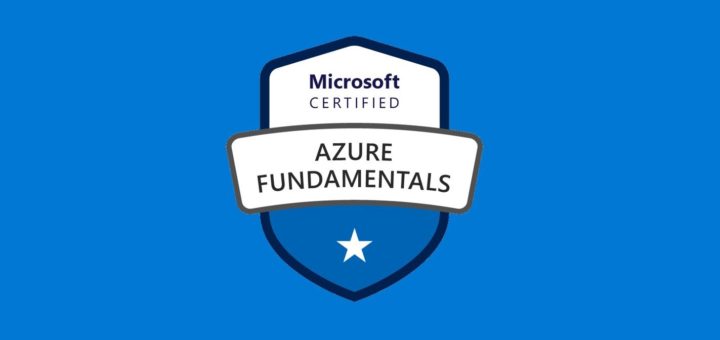Crack AWS Solutions Architect Associate Certification in Easy Way 🤓
Question #1
A Solutions Architect is designing an application that will encrypt all data in an Amazon Redshift cluster.
Which action will encrypt the data at rest?
- A. Place the Redshift cluster in a private subnet.
- B. Use the AWS KMS Default Customer master key.
- C. Encrypt the Amazon EBS volumes.
- D. Encrypt the data using SSL/TLS.
Correct Answer: B
Reference –
https://docs.aws.amazon.com/redshift/latest/mgmt/working-with-db-encryption.html
Question #2
A website experiences unpredictable traffic. During peak traffic times, the database is unable to keep up with the write request.
Which AWS service will help decouple the web application from the database?
- A. Amazon SQS
- B. Amazon EFS
- C. Amazon S3
- D. AWS Lambda
Correct Answer: A
Reference –
https://aws.amazon.com/sqs/faqs/
Question #3
A legacy application needs to interact with local storage using iSCSI. A team needs to design a reliable storage solution to provision all new storage on AWS.
Which storage solution meets the legacy application requirements?
- A. AWS Snowball storage for the legacy application until the application can be re-architected.
- B. AWS Storage Gateway in cached mode for the legacy application storage to write data to Amazon S3.
- C. AWS Storage Gateway in stored mode for the legacy application storage to write data to Amazon S3.
- D. An Amazon S3 volume mounted on the legacy application server locally using the File Gateway service.
Correct Answer: C
Question #4
A Solutions Architect is designing an architecture for a mobile gaming application. The application is expected to be very popular. The Architect needs to prevent the Amazon RDS MySQL database from becoming a bottleneck due to frequently accessed queries.
Which service or feature should the Architect add to prevent a bottleneck?
- A. Multi-AZ feature on the RDS MySQL Database
- B. ELB Classic Load Balancer in front of the web application tier
- C. Amazon SQS in front of RDS MySQL Database
- D. Amazon ElastiCache in front of the RDS MySQL Database
Correct Answer: D
Question #5
A company is launching an application that it expects to be very popular. The company needs a database that can scale with the rest of the application. The schema will change frequently. The application cannot afford any downtime for database changes.
Which AWS service allows the company to achieve these objectives?
- A. Amazon Redshift
- B. Amazon DynamoDB
- C. Amazon RDS MySQL
- D. Amazon Aurora
Correct Answer: B
Question #6
A Solution Architect is designing a disaster recovery solution for a 5 TB Amazon Redshift cluster. The recovery site must be at least 500 miles (805 kilometers) from the live site.
How should the Architect meet these requirements?
- A. Use AWS CloudFormation to deploy the cluster in a second region.
- B. Take a snapshot of the cluster and copy it to another Availability Zone.
- C. Modify the Redshift cluster to span two regions.
- D. Enable cross-region snapshots to a different region.
Correct Answer: D
Question #7
A customer has written an application that uses Amazon S3 exclusively as a data store. The application works well until the customer increases the rate at which the application is updating information. The customer now reports that outdated data occasionally appears when the application accesses objects in Amazon S3.
What could be the problem, given that the application logic is otherwise correct?
- A. The application is reading parts of objects from Amazon S3 using a range header.
- B. The application is reading objects from Amazon S3 using parallel object requests.
- C. The application is updating records by writing new objects with unique keys.
- D. The application is updating records by overwriting existing objects with the same keys.
Correct Answer: A
Question #8
A Solutions Architect is designing a new social media application. The application must provide a secure method for uploading profile photos. Each user should be able to upload a profile photo into a shared storage location for one week after their profile is created.
Which approach will meet all of these requirements?
- A. Use Amazon Kinesis with AWS CloudTrail for auditing the specific times when profile photos are uploaded.
- B. Use Amazon EBS volumes with IAM policies restricting user access to specific time periods.
- C. Use Amazon S3 with the default private access policy and generate pre-signed URLs each time a new site profile is created.
- D. Use Amazon CloudFront with AWS CloudTrail for auditing the specific times when profile photos are uploaded.
Correct Answer: C
Question #9
An application requires block storage for file updates. The data is 500 GB and must continuously sustain 100 MiB/s of aggregate read/write operations.
Which storage option is appropriate for this application?
- A. Amazon S3
- B. Amazon EFS
- C. Amazon EBS
- D. Amazon Glacier
Correct Answer: B
Reference –
https://docs.aws.amazon.com/efs/latest/ug/performance.html
Question #10
A mobile application serves scientific articles from individual files in an Amazon S3 bucket. Articles older than 30 days are rarely read. Articles older than 60 days no longer need to be available through the application, but the application owner would like to keep them for historical purposes.
Which cost-effective solution does BEST meet these requirements?
- A. Create a Lambda function to move files older than 30 days to Amazon EBS and move files older than 60 days to Amazon Glacier.
- B. Create a Lambda function to move files older than 30 days to Amazon Glacier and move files older than 60 days to Amazon EBS.
- C. Create lifecycle rules to move files older than 30 days to Amazon S3 Standard Infrequent Access and move files older than 60 days to Amazon Glacier.
- D. Create lifecycle rules to move files older than 30 days to Amazon Glacier and move files older than 60 days to Amazon S3 Standard Infrequent Access.
Correct Answer: C
Question #11
An organization is currently hosting a large amount of frequently accessed data consisting of key-value pairs and semi-structured documents in their data center.
They are planning to move this data to AWS.
Which of one of the following services MOST effectively meets their needs?
- A. Amazon Redshift
- B. Amazon RDS
- C. Amazon DynamoDB
- D. Amazon Aurora
Correct Answer: C
Reference –
https://aws.amazon.com/blogs/aws/amazon-dynamodb-internet-scale-data-storage-the-nosql-way/
Question #12
A Lambda function must execute a query against an Amazon RDS database in a private subnet.
Which steps are required to allow the Lambda function to access the Amazon RDS database? (Select two.)
- A. Create a VPC Endpoint for Amazon RDS.
- B. Create the Lambda function within the Amazon RDS VPC.
- C. Change the ingress rules of Lambda security group, allowing the Amazon RDS security group.
- D. Change the ingress rules of the Amazon RDS security group, allowing the Lambda security group.
- E. Add an Internet Gateway (IGW) to the VPC, route the private subnet to the IGW.
Correct Answer: AD
Question #13
A Solutions Architect needs to build a resilient data warehouse using Amazon Redshift. The Architect needs to rebuild the Redshift cluster in another region.
Which approach can the Architect take to address this requirement?
- A. Modify the Redshift cluster and configure cross-region snapshots to the other region.
- B. Modify the Redshift cluster to take snapshots of the Amazon EBS volumes each day, sharing those snapshots with the other region.
- C. Modify the Redshift cluster and configure the backup and specify the Amazon S3 bucket in the other region.
- D. Modify the Redshift cluster to use AWS Snowball in export mode with data delivered to the other region.
Correct Answer: B
Question #14
A popular e-commerce application runs on AWS. The application encounters performance issues. The database is unable to handle the amount of queries and load during peak times. The database is running on the RDS Aurora engine on the largest instance size available.
What should an administrator do to improve performance?
- A. Convert the database to Amazon Redshift.
- B. Create a CloudFront distribution.
- C. Convert the database to use EBS Provisioned IOPS.
- D. Create one or more read replicas.
Correct Answer: C
Question #15
A Solutions Architect is designing the architecture for a new three-tier web-based e-commerce site that must be available 24/7. Requests are expected to range from 100 to 10,000 each minute. Usage can vary depending on time of day, holidays, and promotions. The design should be able to handle these volumes, with the ability to handle higher volumes if necessary.
How should the Architect design the architecture to ensure the web tier is cost-optimized and can handle the expected traffic? (Select two.)
- A. Launch Amazon EC2 instances in an Auto Scaling group behind an ELB.
- B. Store all static files in a multi-AZ Amazon Aurora database.
- C. Create an CloudFront distribution pointing to static content in Amazon S3.
- D. Use Amazon Route 53 to route traffic to the correct region.
- E. Use Amazon S3 multi-part uploads to improve upload times.
Correct Answer: AC
Question #16
A Solution Architect is designing a three-tier web application. The Architect wants to restrict access to the database tier to accept traffic from the application servers only. However, these application servers are in an Auto Scaling group and may vary in quantity.
How should the Architect configure the database servers to meet the requirements?
- A. Configure the database security group to allow database traffic from the application server IP addresses.
- B. Configure the database security group to allow database traffic from the application server security group.
- C. Configure the database subnet network ACL to deny all inbound non-database traffic from the application-tier subnet.
- D. Configure the database subnet network ACL to allow inbound database traffic from the application-tier subnet.
Correct Answer: C
Question #17
An Internet-facing multi-tier web application must be highly available. An ELB Classic Load Balancer is deployed in front of the web tier. Amazon EC2 instances at the web application tier are deployed evenly across two Availability Zones. The database is deployed using RDS Multi-AZ. A NAT instance is launched for Amazon
EC2 instances and database resources to access the Internet. These instances are not assigned with public IP addresses.
Which component poses a potential single point of failure in this architecture?
- A. Amazon EC2
- B. NAT instance
- C. ELB Classic Load Balancer
- D. Amazon RDS
Correct Answer: C
Question #18
A call center application consists of a three-tier application using Auto Scaling groups to automatically scale resources as needed. Users report that every morning at 9:00 AM the system becomes very slow for about 15 minutes. A Solution Architect determines that a large percentage of the call center staff starts work at 9:00
AM, so Auto Scaling does not have enough time to scale out to meet demand.
How can the Architect fix the problem?
- A. Change the Auto Scaling group’s scale-out event to scale based on network utilization.
- B. Create an Auto Scaling scheduled action to scale out the necessary resources at 8:30 AM every morning.
- C. Use Reserved Instances to ensure the system has reserved the right amount of capacity for the scale-up events.
- D. Permanently keep a steady state of instances that is needed at 9:00 AM to guarantee available resources, but leverage Spot Instances.
Correct Answer: A
Question #19
An e-commerce application is hosted in AWS. The last time a new product was launched, the application experienced a performance issue due to an enormous spike in traffic. Management decided that capacity must be doubled the week after the product is launched.
Which is the MOST efficient way for management to ensure that capacity requirements are met?
- A. Add a Step Scaling policy.
- B. Add a Dynamic Scaling policy.
- C. Add a Scheduled Scaling action.
- D. Add Amazon EC2 Spot Instances.
Correct Answer: B
Question #20
A customer owns a simple API for their website that receives about 1,000 requests each day and has an average response time of 50 ms. It is currently hosted on one c4.large instance.
Which changes to the architecture will provide high availability at the LOWEST cost?
- A. Create an Auto Scaling group with a minimum of one instance and a maximum of two instances, then use an Application Load Balancer to balance the traffic.
- B. Recreate the API using Amazon API Gateway and use AWS Lambda as the service backend.
- C. Create an Auto Scaling group with a maximum of two instances, then use an Application Load Balancer to balance the traffic.
- D. Recreate the API using Amazon API Gateway and integrate the new API with the existing backend service.
Correct Answer: A



